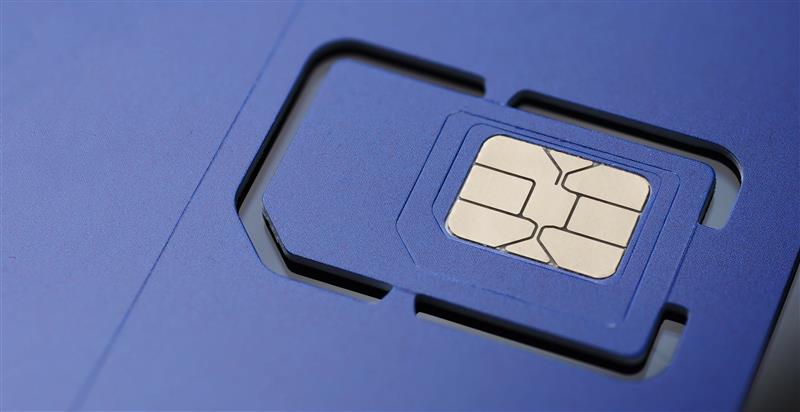IoT is driving a powerful transformation across multiple verticals by making it possible to connect sensors and monitor parameters at a scale never seen before. But IoT itself is seeing a major transformation through the harnessing and application of Machine Learning.
Introduction to Machine Learning in IoT

We’ve said before that the power of IoT is in its ability to aggregate information from hundreds or thousands of sensors at once due to the availability of reliable, specialist connectivity and compact devices with a long battery life.
Yet Machine Learning (ML) and Artificial Intelligence (AI) are helping IoT initiatives evolve into intelligent systems capable of making autonomous decisions based on all this data they generate. This has significant applications in everything from smart cities and smart buildings, all the way down to individual connected vehicles.
Are AI and ML the same thing?

AI and ML are often mentioned in the same breath and in some cases used synonymously. But while they are closely connected they are not the same thing.
If you think of AI as the overall autonomous ‘brain’, ML is just a part of that brain responsible for learning. ML can process large amounts of data and take new inferences from the analysis, then use that output to improve its processes the next time. Combined with AI, ML can help computerized systems autonomously extract knowledge from data and learn from it without human intervention or supervision.
Benefits of using AI and ML together in IoT

The combination of AI and ML with IoT can bring powerful benefits to organizations today, with new and unforeseen possibilities constantly emerging.
As IoT devices help create bigger and more complex data sets, automated intelligence is key to automating the processing of that data to unlock value, generate useful insights and act on them.
Some of the business benefits include:
- Wider data ranges: The ability to ingest and process more data from a range
of unstructured and structured data sources. - Faster decision-making: Human supervised and unsupervised ML models can accelerate the processing of data and do it at scale for faster decision-making.
- Improved efficiency: Self-learning autonomous systems that can operate at scale can increase operational efficiency.
- Analytics and insights: Wider datasets can be aggregated from multiple sources and used to generate predictive analytics. These in turn can be used to generate insights into business processes and applications.
These predictive capabilities, enabled through algorithms that can identify historical patterns in very large datasets and see patterns emerging in real-time, facilitates a shift from reactive to proactive systems, capable of anticipating user needs, optimizing resource allocation or process performance, and adapting to changing environments dynamically.
Impact of ML on IoT deployments

Optimizing performance
ML can help identify and continuously improve the algorithmic and statistical models used across various sectors, including telecoms. Even extending to IoT connectivity, where ML can help optimize network performance and facilitate the automation of routine processes.
Predictive maintenance
ML can anticipate equipment faults before they happen using sensors and analytics software to monitor the status and performance of a machine or piece of equipment and predict when it will require maintenance. This approach avoids catastrophic failure and unplanned downtime, reducing maintenance costs overall.
Anomaly detection
With thousands or tens of thousands of IoT devices out in the field, ML can help identify abnormal data patterns that indicate something is wrong. This could be unexpected traffic congestion on a city street, or a herd of cattle or piece of equipment straying outside of its expected geo location.
Increased efficiency
As ML powered systems learn they can be entrusted with more autonomous tasks, analyzing data, self-improving and then automating repetitive processes flawlessly to eliminate human error.
Scalability
By adding more and more processing power, ML capabilities can become almost infinitely scalable. While ‘infinitely scalable’ may not be practical in reality, the software part of most processes can be significantly enhanced.
Optimizing consumption
ML can help utilities, city managers and building managers understand, predict, and optimize the consumption of energy and water at regional or municipal levels all the way down to the building level.
Security
The proliferation of IoT devices has increased the attack surface for cyber threats. AI is playing a crucial role in enhancing IoT security by detecting anomalies, automating responses, and fortifying data privacy.
- Anomaly Detection: AI models monitor network traffic and identify suspicious patterns, enabling proactive threat mitigation.
- Automated Threat Response: Intelligent systems can neutralize attacks in real time, such as isolating compromised devices.
- Data Privacy: AI ensures that sensitive IoT data is encrypted and accessible only to authorized users.
ML, AI and IoT case studies and success stories
Revolutionising healthcare with IoT
Biofourmis is an innovator in the healthcare industry with its wearable biosensor device Everion™ that measures vital signs and biomarkers.
The wearable device is worn on the upper arm and measures vital signs and biomarkers such as temperature, oxygen levels, blood pressure and respiration rate. Using an app on the patient’s smartphone, the device sensors collect real-time data and send it via the cloud to the Biofourmis platform, where clinicians can access it and apply ML modeling.
AI and ML capabilities give the solution personalized and predictive power and over time the detailed data reveals patterns and trends and it can tell an individual that their condition might be deteriorating and advise them to seek medical attention.
The medical devices sector is dominating the IoT adoption race, with larger deployments of devices than any other industry and ML and AI rapidly accelerating the possibilities.
Smart cities
Smart cities are the aggregation of lots of other technologies, from smart offices and buildings, to retail, to water, waste and energy management, all overlaid with an AI ‘brain’ that helps manage the processes of a city and keep inhabitants and traffic flowing smoothly. ML can help optimize many of a smart city’s individual processes. For instance, Barcelona has implemented IoT-enabled waste bins that notify collection teams when they are full, reducing unnecessary trips and lowering operational costs.
Smart buildings
IoT devices integrated with AI solutions are transforming smart building energy management by enabling systems to dynamically adjust to environmental conditions. For example, smart thermostats and lighting systems leverage real-time data to optimize energy consumption based on occupancy and external weather conditions. Google’s DeepMind demonstrated the power of this approach in their data centres, achieving a 40% reduction in energy usage by fine-tuning cooling processes with AI algorithms.
Smart retail
The transformative effect of IoT isn’t just being seen in the traditional POS terminals or card readers you might expect in a store or a restaurant, but also in ATMs, vending machines, parking meters, digital signs and fare collection devices, where ML can help identify trends to help maximize revenue.
Industrial and manufacturing
Instrumentation for industrial sensors, actuators and machines means providers of industrial network equipment increasingly offer solutions to enable customers to monitor and control devices wirelessly in parts of the plant that are normally not connected to the control room due to accessibility or wiring costs. ML models can help keep machines running smoothly and avoid unnecessary downtime.
Predictive maintenance
In industries where equipment downtime can be costly, predictive maintenance has become a game-changer. AI algorithms, trained on data from IoT sensors, can identify early signs of wear and tear, allowing maintenance teams to intervene before a breakdown occurs. For instance, General Electric employs such technology to monitor jet engines and wind turbines. By analysing vibration patterns and temperature fluctuations, their AI models predict potential failures, helping to avoid costly interruptions and reduce maintenance expenditures by up to 30%.
Supply chains
AI and IoT are redefining logistics and inventory management by improving visibility and accuracy in the supply chain. IoT-enabled devices track shipments in real time, while AI models analyze historical and current data to forecast demand and optimize inventory. Amazon has seamlessly integrated IoT and AI in its operations, using predictive analytics to anticipate inventory needs and autonomous robots to streamline warehouse logistics, significantly enhancing efficiency.
Autonomous vehicles
Autonomous vehicles and connected cars already make significant use of AI and ML due to the integration of multiple sensors and also the opportunity to embed AI capabilities in the device (the vehicle). Vehicles rely on multiple video cameras and sensor systems to gather data about nearby vehicles, driving conditions and even look for pedestrians and hazards and ML can help analyze all this raw data. Tesla’s Autopilot system exemplifies this, combining IoT and AI to enable features such as lane-keeping, adaptive cruise control, and automated parking.
Autonomous delivery robots
Delivery robots and drones can be used in both a macro environment, such as last mile delivery of small items or food, or in a closed environment like a warehouse or factory to move products or materials around the campus. IoT sensors gather data about the robot’s environment and then use AI and ML to make traversal-based decisions.
Smart farming
The integration of AI and IoT in agriculture has led to precision farming, which optimizes crop yields and resource usage. IoT sensors monitor soil moisture, weather conditions, and crop health, while AI provides actionable insights for irrigation, fertilization, and pest control. Companies like John Deere are at the forefront, equipping tractors with IoT sensors and AI analytics to enhance planting and harvesting processes, thereby maximizing efficiency and sustainability.
Using ML to optimize IoT
When it comes to the application of ML in IoT, where the data processing will take place and the models will be run is an important consideration. Many enterprises will elect to do this in the cloud, but some use cases are making the case for edge compute a viable option.
Whichever approach you choose, as with all IoT initiatives, the key challenge is selecting the most appropriate connectivity technology to ensure the data gets to the right place within the right timeframe and the key consideration here is to look at the problem you are trying to solve.
Eseye brings decades of end-to-end expertise to integrate and optimise IoT connectivity delivering near 100% uptime. From idea to implementation and beyond, we deliver lasting value from IoT. Nobody does IoT better.

